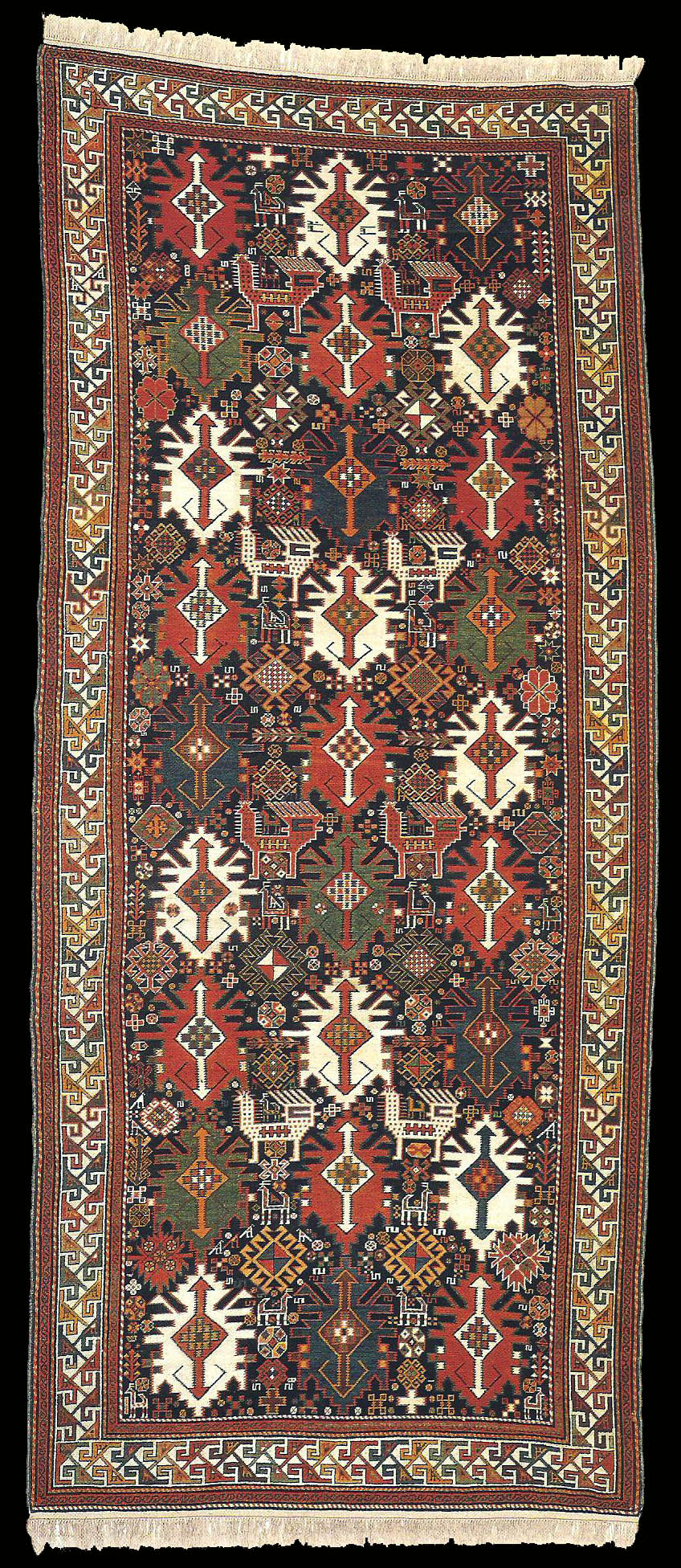|
63 Shirvan
395 X 173 cm
Dated in the upper white
medallion: 320 and 31, either
1320 = 1902 or 1332 = 1913
The midnight-blue central field consists of three simple vertical and nine
horizontal rows of giant palmettes (kubpa) in alternating colours. In the
opinion of L. Kerimov, these göls consist of vegetable and animal elements.
A great number of hook-rimmed lozenges, crosses, stars, rosettes and animals
are interspersed among them. The large fabulous birds are particularly
striking. They are quite individualised, with dotted bodies, quilled
throats, and crests on their heads.
The light-ground main border dominates and is termed hörmeh naqish according
to L. Kerimov. Two narrow, red-ground S zanjireh minor borders flank the
main border.
Warps: Wool, Z 3 S, beige to brown.
Wefts: Cotton Z2, white, 2 wefts: 1st tight, 2nd waved.
Pile: Wool, Z2; Camel hair, Z2. Pile Height: 5 mm.
Knots: Symmetrical 2,A 75', H 30, V30 = 900Kn / dm2.
Handle: Velours, almost thin, ribbed. Upper End: -. now 1.5 cm Wool
flat-woven end, plain weave, 1 row weft twining, fringes in groups knotted
in 3 staggered rows. Lower End: Like upper end.
Selvedge: c. 0.8 cm light blue cotton shirazi around 3 ribs in
figure-of-eight wrapping with supplemental threads extending partly into the
fabric.
Remarks: Kilim pattern, the orange and light red colours are weak.
Literature: Not
identified by L. Kerimov.
published at Siyawouch
Azadi "Azerbaijani Caucasian
rugs" plate no: 63
 |

